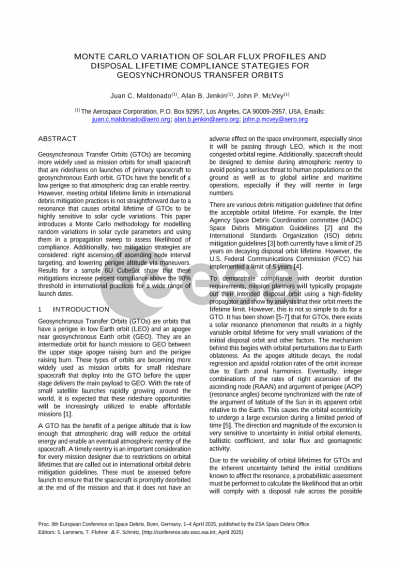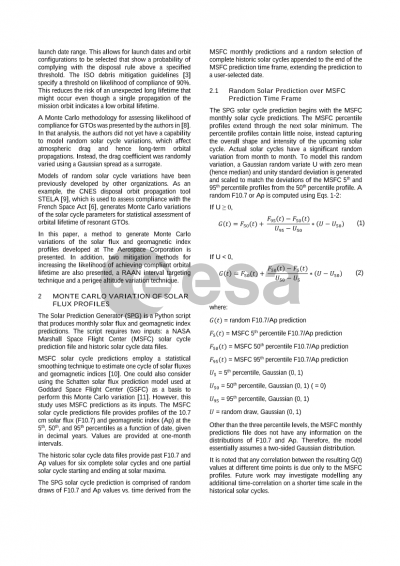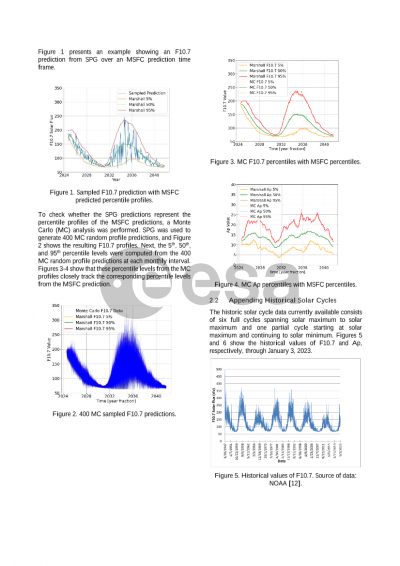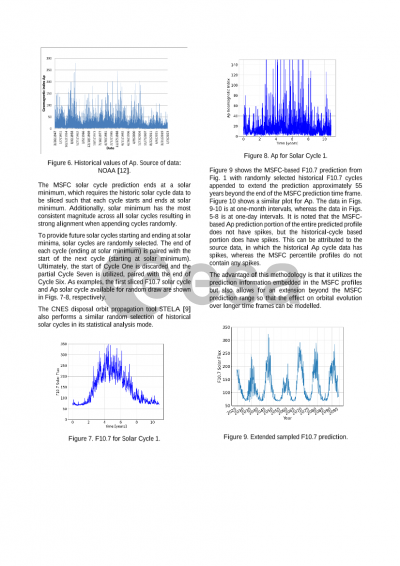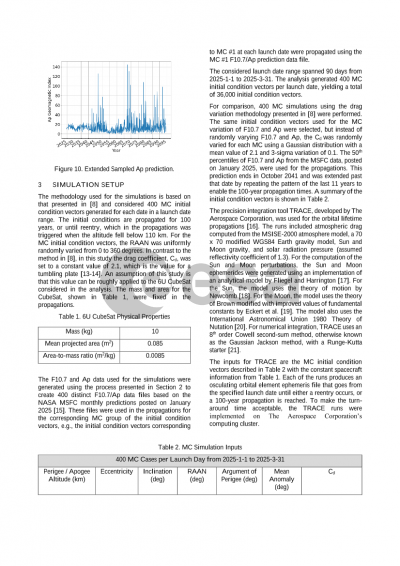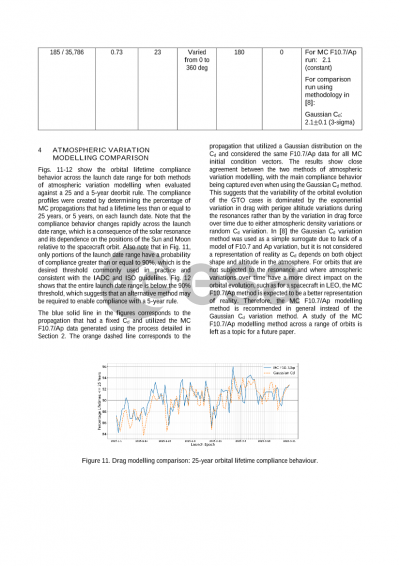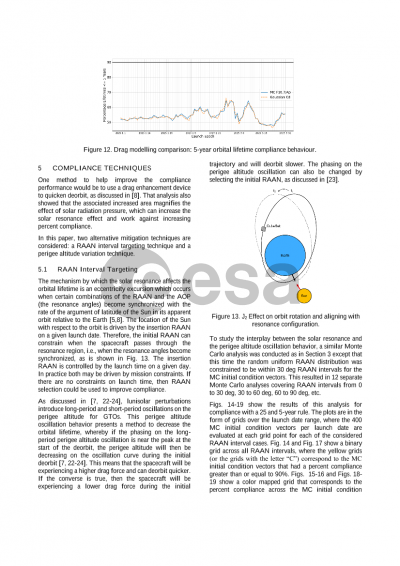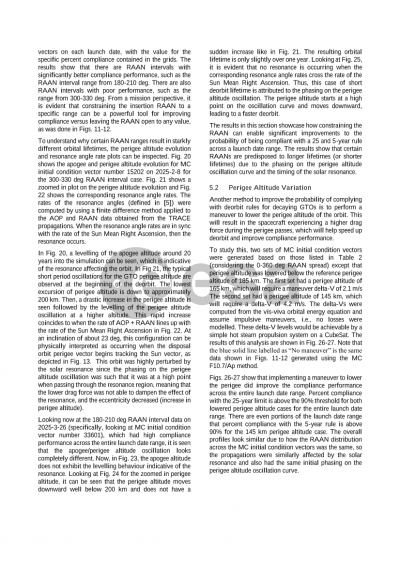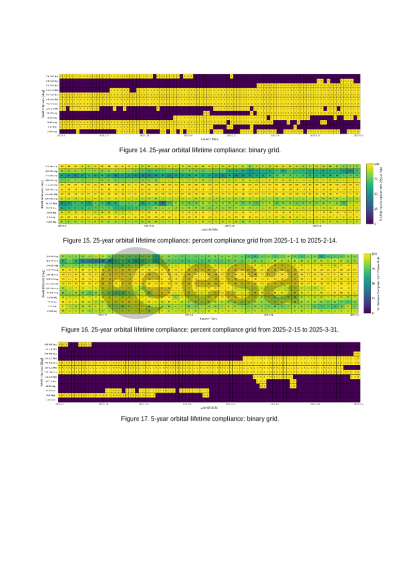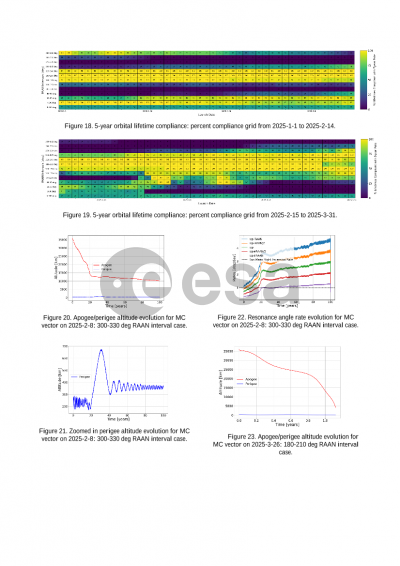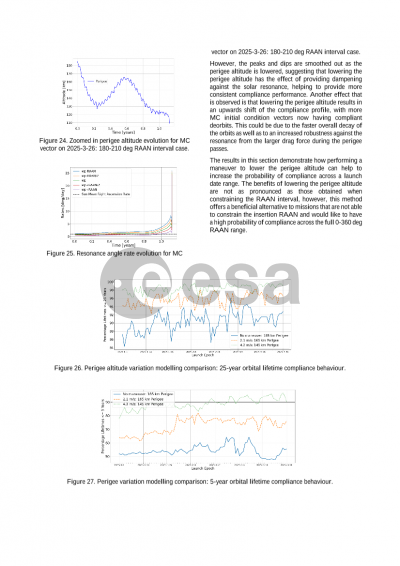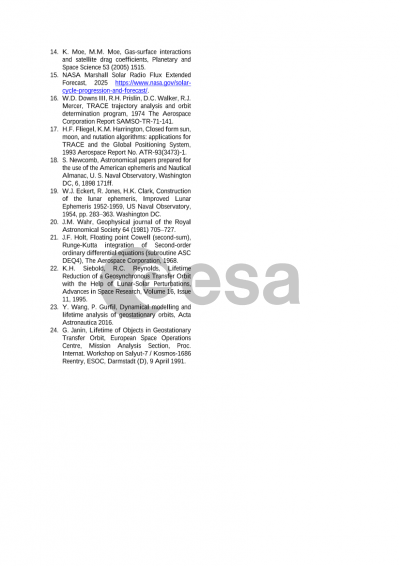Document details

Abstract
Geosynchronous Transfer Orbits (GTOs) with a perigee in low Earth orbit (LEO) are attractive for small rideshare missions since they can typically be deployed into the GTO before the launch vehicle upper stage performs final burns to deliver the primary spacecraft to geosynchronous Earth orbit (GEO). GTOs have the benefit of a perigee that is typically low enough that atmospheric drag can cause the apogee to decay and enable an eventual reentry. This is beneficial for missions that don’t have the capabilities to perform large maneuvers for controlled reentry or dispose into a graveyard orbit. Making sure a satellite can successfully dispose of itself at the end of its mission is an essential consideration that is governed by applicable debris mitigation practices, with common limits on decaying orbit lifetime for an Earth reentry being 25 and 5 years.
Unfortunately, meeting these decaying orbital lifetime limits for GTOs is not straight forward. Decaying GTOs have a resonance condition that causes the orbital lifetime to be highly variable and not deterministically predictable. Small variations in the initial orbital elements, drag profile, and launch epoch can lead to significant variations in the orbital lifetime. Studies on resonant decaying GTOs have been presented by various organizations, including The Aerospace Corporation (Jenkin, McVey, and Maldonado) and the French Centre National d’Études Spatiale (Fraysse, Lamy, et al.). As a result, it is necessary to probabilistically assess the likelihood of being compliant with a given decaying orbital lifetime limit.
A recent paper by Maldonado et al. presented a methodology for assessing likelihood of compliance with launch date. This methodology performed a Monte Carlo sweep that randomly varied right ascension of ascending node (RAAN) and drag coefficient for each day in a launch date range. Median (50-percentile) predictions of solar cycle parameters that affect atmospheric density (solar flux F10.7 and geomagnetic index Ap) over a time interval were used. The actual random variation of these parameters was not modeled. The study also considered drag enhancement to increase the likelihood of compliance. While the study showed drag enhancement to be effective, the amount of drag enhancement that can be practically implemented may be limited, and too much can actually increase the resonance and decrease likelihood of compliance.
This paper introduces a methodology for including random variations of F10.7 and Ap. The methodology uses 5, 50, and 95-percentile predictions over a time period to infer a distribution of F10.7 and Ap from which values are randomly drawn. A discrete filter with parameters derived from historical solar cycle data is used to generate time-correlated random values. The paper also investigates alternative compliance strategies. A RAAN interval targeting technique is demonstrated that can lead to a significantly higher likelihood of a compliant disposal across the considered launch date range. A perigee variation analysis is also presented that shows how limited maneuvers could increase likelihood of compliance. Compliance results using the new F10.7/Ap methodology are shown for different classes of CubeSats and small spacecraft for a 25-year and a 5-year limit.
Preview
